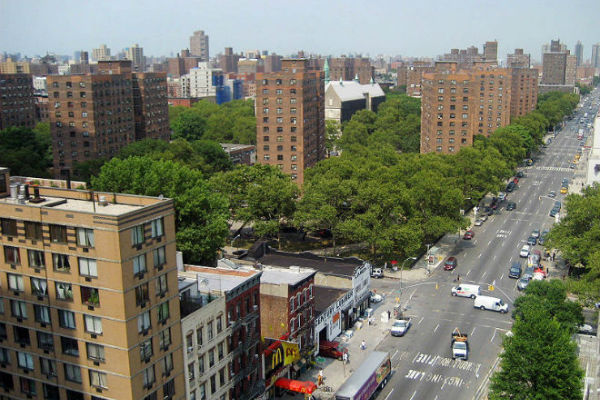 As part of the 2017 Mayor’s Management Report (MMR), the Health Department today published new data showing a continued decrease in the percentage of uninsured adult New Yorkers – from 20.9 percent in Fiscal Year (FY) 2014 to 10.9 percent in FY 2017. It’s estimated that there are now 704,000 uninsured adults in New York City, compared with 1,324,000 adults just three years ago. In the last four years, the de Blasio administration has ramped up efforts to increase insurance enrollment, and in 2016 the City launched GetCoveredNYC, a comprehensive enrolment campaign involving paid media and texting services, the training and deployment of application counselors, and coordinated community outreach. The initiatives were multilingual and designed to reach low-income, uninsured populations across the five boroughs. This year, Mayor Bill de Blasio augmented GetCoveredNYC with increased citywide advertising for enrollment services, as well as specialists to conduct on-the-ground outreach and case management. The Mayor’s investment comes as the Trump administration announced last week that it is cutting millions in spending on advertising and promotion for the open enrollment period under the ACA.
As part of the 2017 Mayor’s Management Report (MMR), the Health Department today published new data showing a continued decrease in the percentage of uninsured adult New Yorkers – from 20.9 percent in Fiscal Year (FY) 2014 to 10.9 percent in FY 2017. It’s estimated that there are now 704,000 uninsured adults in New York City, compared with 1,324,000 adults just three years ago. In the last four years, the de Blasio administration has ramped up efforts to increase insurance enrollment, and in 2016 the City launched GetCoveredNYC, a comprehensive enrolment campaign involving paid media and texting services, the training and deployment of application counselors, and coordinated community outreach. The initiatives were multilingual and designed to reach low-income, uninsured populations across the five boroughs. This year, Mayor Bill de Blasio augmented GetCoveredNYC with increased citywide advertising for enrollment services, as well as specialists to conduct on-the-ground outreach and case management. The Mayor’s investment comes as the Trump administration announced last week that it is cutting millions in spending on advertising and promotion for the open enrollment period under the ACA.
The 2017 MMR also shows a decrease in the number of children diagnosed with elevated blood lead levels. The number of cases is down by 9.7 percent – 708 cases in FY17 compared to 784 in FY16 – continuing a five-year downward trend. This decrease is attributed to the reduction of lead-based paint hazards in homes, early identification of lead poisoning through blood lead testing, and educational efforts aimed at health care providers, community-based organizations and families. Peeling lead paint remains the most common source of lead exposure for children. The Health Department’s Healthy Homes project provides information, community seminars and educational materials about preventing and reducing exposure to home health hazards, including lead paint chips and dust.
Other major indicators point to the ongoing commitment of the agency to improve the health and wellness of all New Yorkers. The Mayor’s Management Report can be found at nyc.gov.
“As Washington debates the future of the health care system in this country, New York City has stepped up its commitment to ensuring access to health care,” said Health Commissioner Dr. Mary T. Bassett. “This significant decrease in the uninsured rate shows that the campaign to ‘Get Covered’ has paid off. The result is healthier lives and greater security for communities that lack access to affordable and quality care. I thank our sister agencies and Mayor de Blasio for their commitment to this important issue.”
Additional highlights of health indicators in the MMR include:
- HIV Rates: The annual number of new HIV diagnoses continues to fall in New York City and has reached the lowest level since the epidemic began. According to preliminary data available for Calendar Year (CY) 2016, there were 2,279 new HIV diagnoses – a decrease of over 200 cases compared to the previous year. The City is currently on track to meet the main goal of the NYC Plan to End the Epidemic (ETE), which aims to reduce the number of HIV diagnoses to fewer than 600 by the year 2020. Announced by Mayor de Blasio in 2015, ETE helped revamp the City’s eight Sexual Health Clinics, including adding staff, expanding hours of operation, and offering a revolutionary approach to medical treatment for New Yorkers at risk or newly diagnosed with HIV and other sexually transmitted infections. Among the new services is the JumpstART program, which provides antiretroviral treatment and connection to care to eligible patients newly diagnosed with HIV. ETE also helped expand the availability of post-exposure prophylaxis (PEP) for HIV-negative New Yorkers who may have been exposed to HIV, and pre-exposure prophylaxis (PrEP) to help HIV-negative people reduce the risk of HIV infection.
- HPV Vaccinations: Every year, over 31,000 men and women are diagnosed with cancer caused by the human papillomavirus (HPV) nationwide. The HPV vaccine can reduce the risk of certain HPV-related cancers by up to 99 percent. The Health Department works closely with local providers and parents to increase the vaccination rate, and also tracks HPV vaccine series completion among 13 to 17 year olds. In FY17, the percentage of people who completed their series of HPV vaccinations reached 56.6 percent, from 44.2 percent in FY16. As of June 2017, HPV vaccine series completion was 59.7 percent for females and 53.6 percent for males. New York City has among the highest rates of HPV vaccine coverage in the nation. HPV vaccines are currently available at the Fort Greene Immunization Clinic, as well as all eight Sexual Health Clinics to patients who are eligible based on guidelines from the Centers for Disease Control and Prevention.
- Supportive Housing: The City has developed additional housing services for New Yorkers with or at risk of developing mental illnesses or developmental disabilities. 1,800 new units of supportive housing were added in FY17 as a result of the Administration’s plan to create 15,000 units of supportive housing over the next 15 years. The City’s 15,000 unit plan is comprised of roughly 7,500 newly-constructed, congregate units and 7,500 scattered site units. In FY17, the number of supportive housing units available to people with serious mental illness increased to 7,800 from 6,000 the previous fiscal year.
- NYC Well: As the City expands services for mental health, the Department has seen an increase in calls to NYC Well – the City’s crisis hotline that was formerly known as LifeNet. The number of calls reached 170,400 in FY17. NYC Well volume from the period of April to June 2017 experienced surges as a result of media campaigns well above the daily average of approximately 700 since the program’s inception. Through ThriveNYC, NYC Well offers 24/7 crisis counseling, peer support, information and referral to mental health and substance misuse services, and follow-up services to help keep New Yorkers connected to care.
- Restaurant Inspections: The Health Department continues to work on reducing the threat of food-borne illnesses throughout the city. Due to staffing changes, the restaurants receiving a full sanitary inspection in FY17 declined 12.3 percent compared to FY16. However, the Food Safety program expects to meet the 100 percent target next fiscal year. The Food Safety program reduces the risk of foodborne illness for the dining public by enforcing the City’s food safety rules through education, inspections, and posting letter grades that enable the public to make informed dining decisions. As a result of this work, more than 93 percent of city restaurants posted “A” grades in FY17– a slight uptick from 92.7 percent in FY16.
- Pest Control: In FY17, the number of initial pest control inspections increased 49 percent over the previous fiscal year. This growth is due to proactive efforts by the Health Department, including the Rat Reservoir program and the Shelter Repair Squad, which regularly inspects homeless shelters. There was also a decline in the rate of initial inspections with active rat signs by 1.7 percentage points – 12.2 percent in FY17 versus 13.9 percent in FY16. To build on the success of the current rat abatement programs, this year, the City announced a $32 million plan to reduce rat populations. The plan targets three of the most infested parts of the city – the Grand Concourse area, Chinatown/East Village/Lower East Side and Bushwick/Bedford-Stuyvesant. Under the plan, the Health Department has dedicated funding to increase inspections in these neighborhoods, launch a media campaign emphasizing the important of garbage management, and hire a team to plug rat burrows. The City previously invested $2.9 million to expand the Rat Reservoir program, which increased program staff from nine people to 50 people, added exterminators and public health sanitarians, and allows the agency to focus on more “rat reservoirs” across the city.
- Smoking Rates: New York City has seen a statistically significant decrease in the percentage of adults who smoke from calendar year 2012 to calendar year 2016 – from 15.5 percent to 13.1 percent. The sustained reduction in smoking can be attributed to the City’s comprehensive tobacco control strategy, including hard-hitting media, as well as price, access and smoke-free air policies, and removing barriers to cessation resources. Since 2014, the Health Department has also worked with the City Council to restrict discounts for tobacco products and sales of tobacco products and e-cigarettes to people 21 years of age and older. The City is committed to further reduce the number of smokers in New York City, and this year Mayor de Blasio signed a series of tobacco-control bills to achieve this goal. The new laws will: raise the minimum prices for cigarettes and all other tobacco products; cap the number of tobacco retailers and e-cigarette retailers citywide; create a retail license for e-cigarettes; increase the fee for a cigarette retail license; require all residential buildings to create a smoking policy; prohibit smoking and the use of e-cigarettes in common areas in multiple dwellings with fewer than ten units; and ban the sale of tobacco products in pharmacies.
- Substance Misuse and Overdose: The number of unintentional drug overdose deaths increased for six consecutive years. There were 1,374 overdose deaths in calendar year 2016, up from 939 in calendar year 2015. The increase in overdose deaths is primarily driven by the presence of fentanyl, a synthetic opioid 50-100 times more potent than morphine. Fentanyl is found mixed into heroin and cocaine. In 2016, more than 80 percent of overdose deaths involved opioids, and 72 percent of overdose deaths involved heroin and/or fentanyl. To address the opioid epidemic, Mayor de Blasio and First Lady Chirlane McCray launched HealingNYC in March 2017, the City’s comprehensive initiative to reduce opioid overdose deaths by 35 percent over five years. Through HealingNYC, the Administration is investing $38 million annually at full ramp-up to increase naloxone distribution and community-based trainings, expand access to medication assisted treatment and promote judicious opioid prescribing. The Health Department also funds regular naloxone trainings, which teach New Yorkers to recognize the signs of an overdose and respond by calling 911 and administering naloxone. The trainings are free, and all participants receive a free naloxone kit. Treatment with methadone or buprenorphine can also reduce risk of overdose.
- Infant Mortality Rate: In calendar year 2016, the infant mortality rate declined to 4.1 percent per 1,000 live births, which continues a multi-year trend of decreasing rates. Despite this success, racial and ethnic disparities persist. In 2015, in comparison to babies born to White mothers, babies born to Black mothers were three times more likely to die in their first year of life; babies born to Puerto Rican mothers were 2.3 times more likely to die; and babies born to Latino mothers were 1.6 times more likely to die in the same time period. In response to these persistent inequities, this year, the Department launched the “Here for You” campaign to promote evidence-based initiatives that have been shown to improve maternal and infant health outcomes. In addition to the home visiting programs — like the Nurse-Family Partnership, the Newborn Home Visiting Program and the By My Side doula program — the Health Department provides parents support with breastfeeding, information about parent groups in the community, referrals to Early Intervention services and information and resources to support safe sleep practices. The Department also partnered with First Lady McCray and Queens Borough President Melinda Katz to announce the donation of 1,000 new Pack ‘N Play portable cribs to provide families in Queens with a safe sleep surface for their infants.
- Customer Service: The Health Department is committed to improving the customer experience and keeping up with mainstream ways of obtaining information. The average response time for vital records mail and internet requests improved from 1.8 days in FY16 to 1.6 days in FY17, which surpasses the target of three days. The processing time for death certificates also decreased from two days to 1.5 days. Slight fluctuations in processing times are normal and reflect various factors, including customer volume, staff vacancies and process improvements.
Background on the Mayor’s Management Report
The Mayor’s Management Report (MMR), which is mandated by the City Charter, serves as a public account of the performance of City agencies, measuring whether they are delivering services efficiently, effectively and expeditiously. The MMR is released twice a year. The Preliminary MMR provides an early update of how the City is performing four months into the fiscal year. The full-fiscal MMR, published each September, looks retrospectively at the City’s performance during the prior fiscal year.
Related articles
- With A Increase In Harlem, Experts Forecasting Chill In NYC Hospitality Market (harlemworldmag.com)
- NYC Emergency Management Department Tips For Upcoming Extreme Cold Weather (harlemworldmag.com)
- de Blasio And Farina Support Mentoring Event On MLK Day (harlemworldmag.com)
Become a Harlem Insider!
By submitting this form, you are consenting to receive marketing emails from: Harlem World Magazine, 2521 1/2 west 42nd street, Los Angeles, CA, 90008, https://www.harlemworldmagazine.com. You can revoke your consent to receive emails at any time by using the SafeUnsubscribe® link, found at the bottom of every email. Emails are serviced by Constant Contact








